Welcome to your Museum Bali in the Denpasar Visitor Guide. It’s a comprehensive resource for exploring the treasure trove of Bali’s rich cultural and historical heritage nestled in the vibrant heart of Denpasar City. More than just a stunning backdrop for pre-wedding photos, this museum is a must-visit for anyone eager to dive deep into the vibrant culture of Bali. Furthermore, this guide will share essential tips and information. Therefore, we aim to ensure your visit is enjoyable and enlightening, with affordable admission fees and convenient access.
Bahasa Indonesia, Museum Bali di Denpasar: Panduan Kunjungan Untuk Wisatawan.
Table of Contents[Hide][Show]
Discovering the Bali Museum: A Cultural Gem in Denpasar
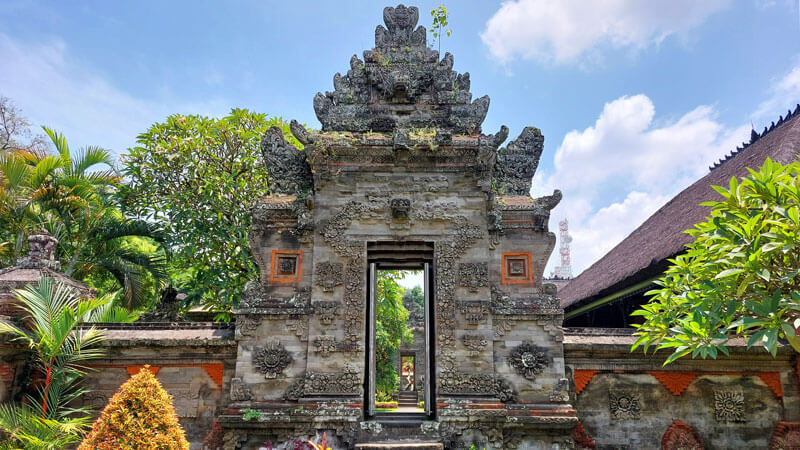
Above all, the Bali Museum in Denpasar stands out as a cultural jewel on the Island of the Gods. Offering a more comprehensive glimpse into Balinese civilization than your average museum, it showcases a rich tapestry of Balinese history and art from prehistoric times to the modern era.
Moreover, Managed by the Bali Provincial Government, this museum is a veritable wellspring of knowledge about Balinese culture. Additionally, for those seeking more unique educational experiences in Bali, the Denpasar Fingerprint Art Gallery is another stop you shouldn’t miss.
Must-Visit Attractions: Exploring the Bali Museum’s Unique Charm
- Captivating Pre-Wedding Photo Sessions: Furthermore, the serene Balinese architecture of the museum provides the perfect picturesque setting for capturing those special moments.
- Enrichment of Cultural Knowledge: Immerse yourself in Balinese history, art, and culture through artifacts reflecting local wisdom.
- Standout Cultural Destination: The Bali Museum offers a unique window into Balinese life, with collections that cover various cultural facets.
Navigating the Bali Museum In Denpasar: Essential Visitor Guide for a Memorable Visit
Located in the pulsating heart of Denpasar City, on Jalan Mayor Wisnu, Bali, 80232, the Bali Museum is easily accessible. Google Maps is your best friend for pinpointing a location swiftly.
Moreover, for detailed information on entrance ticket prices, purchase, payment methods, and visitor facilities, please refer to the Museum Bali in Denpasar Visitor Guide’s section on Entrance Ticket Prices.
Travel Insights: Reaching the Bali Museum from Popular Bali Destinations
- Luhur Uluwatu Temple: About 32 kilometers; estimated travel time is 1 hour and 30 minutes.
- Garuda Wisnu Kencana (GWK) Cultural Park: Approximately 22 kilometers, with a travel time of around 60 minutes.
- Kuta Beach: Roughly 10 kilometers away, with a travel time of about 45 minutes.
Moreover, these estimates give you an idea of how far and how long it might take to reach the Bali Museum from several popular tourist destinations in Bali.
Enhancing Your Visit: Nearby Attractions around the Bali Museum
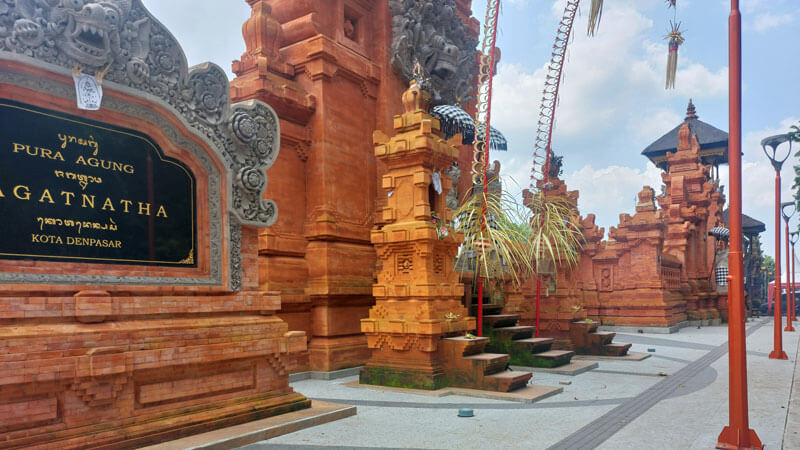
- Jagatnatha Temple: Just a stone’s throw from the Bali Museum, this temple offers architectural beauty and a deeper spiritual understanding of Bali.
- Puputan Badung Square: A sprawling open area, perfect for unwinding after your museum visit, featuring the iconic Catur Muka statue.
- Kumbasari Traditional Art Market: Situated in the heart of Denpasar City, this market is a treasure trove of authentic Balinese handicrafts, arts, and souvenirs.
- Bajra Sandhi Monument: Continue your cultural journey with a visit to this iconic landmark in Denpasar. Check out the latest Bajra Sandhi Monument entry ticket prices to plan your visit.
For a broader exploration of Denpasar’s exciting and popular tourist attractions, dive into our complete list.
Getting Around: Convenient Transportation Options to the Bali Museum
Denpasar, Bali’s cultural and governmental hub, is well-connected and effortlessly accessible from various parts of the island, such as Kuta, Seminyak, Canggu, or Nusa Dua. Transportation options include:
- Motorbike: A flexible way to navigate and soak in the beauty of Bali.
- Car Rental with Driver: Ideal for families or groups seeking comfort while exploring Denpasar and its surroundings.
For more comprehensive information on transportation in Bali, visit our Bali Tourist Transportation Guide page.
Delving into History: A Snapshot of the Bali Museum’s Past and Design
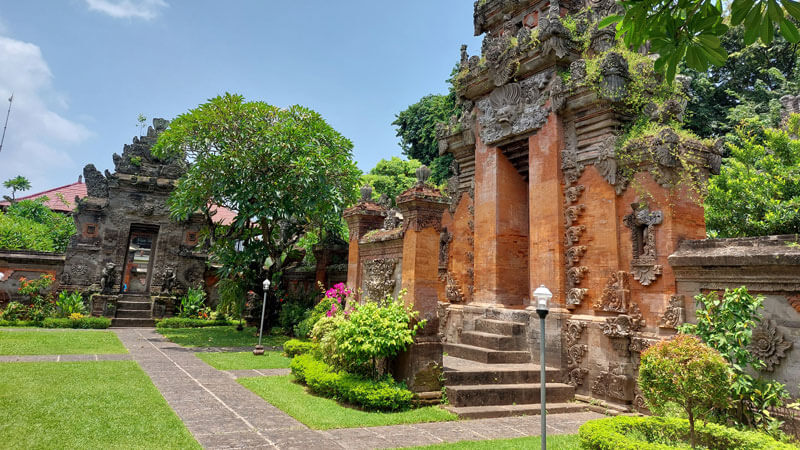
Tracing the Roots: The Historical Journey of the Bali Museum
The Bali Museum, a cultural landmark in Denpasar, was established on December 8, 1932. Reflecting Bali’s journey from colonial times to modern-day, the museum has undergone various transformations, including expansions and management shifts, all aimed at preserving the island’s rich heritage.
For further reading, for those of you who want to know more details about the history of the Bali Museum, visit Wikipedia.
Architectural Marvels: Exploring the Design of the Bali Museum
The museum’s architecture is a testament to Balinese creativity, skillfully merging traditional temple and palace designs. Its distinctive meru roof and elaborate carvings enhance its visual appeal and convey the deep connection between humans, nature, and spirituality. This architectural beauty also provides a scenic setting for photography, capturing the essence of Balinese culture.
Highlights of the Bali Museum in Denpasar: Key Exhibits and Cultural Insights
Moving on, the Bali Museum is divided into three primary sections, each representing a unique aspect of Bali’s history and culture. Moreover, these areas are named after the regions of the kings who contributed to the museum’s establishment, showcasing the island’s collaborative spirit.
1. Karangasem Building: A Deep Dive into Balinese Traditions
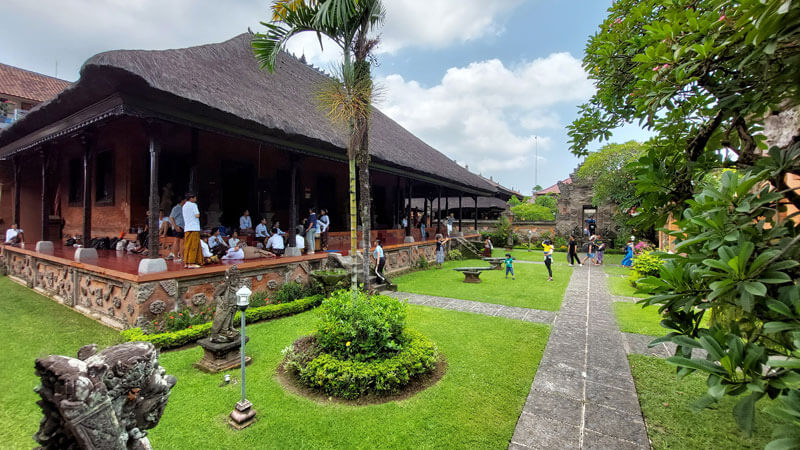
Firstly, the Karangasem Building highlights the core of Balinese traditions and spirituality. Notable features include:
- Impressive Gate: A Balinese temple gate with intricate carvings welcomes visitors, setting the tone for the cultural journey ahead.
- Garden Serenity: The surrounding gardens offer a tranquil space for reflection amidst nature’s beauty.
- Key Artifacts: The building houses essential pieces such as ancient sculptures that provide insights into Bali’s early art, ceramics and statues with spiritual significance, the Men Brayut Statue symbolizing family values, and traditional Songket textiles showcasing weaving techniques.
2. Tabanan Building: Showcasing the Vibrancy of Balinese Performing Arts

Secondly, the Tabanan Building focuses on Bali’s performing arts, displaying a selection of traditional keris, dance costumes, and masks. Highlights include:
- Traditional Keris: A collection of ceremonial daggers, each with detailed carvings, representing Bali’s craftsmanship and spiritual heritage.
- Performing Arts: The Uluwatu Kecak Dance performance is a must-see, capturing the essence of Balinese performing arts.
- Dance Costumes and Masks: Vibrant costumes and masks used in Balinese dances add color and drama to the island’s rich performing arts tradition.
3. Buleleng Building: Uncovering the Historical Tapestry of Bali
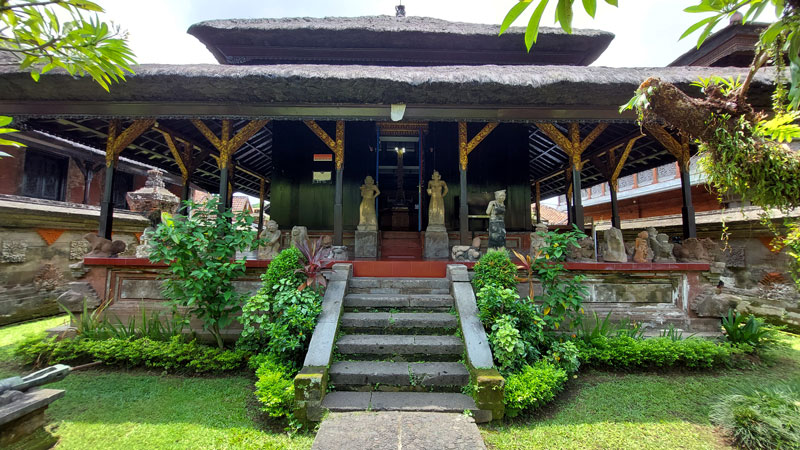
Lastly, the Buleleng Building offers a glimpse into Bali’s historical narrative through artifacts like kepeng coins and statues. Certainly, illustrates the island’s cultural evolution and trade history.
- Kepeng Money: Explore the history of Bali’s traditional currency and its role in the island’s social and religious practices.
- Global Connections: Discover how Bali’s history is connected to global maritime trade routes.
Maximizing Your Experience: Museum Bali in Denpasar Visitor Guide
Above all, the Bali Museum is a gateway to understanding Bali’s vibrant culture and history. Additionally, visitors can better appreciate the island’s artistic and cultural landscape by focusing on the key highlights and artifacts. Furthermore, this Museum Bali in Denpasar Visitor Guide provides practical tips and essential information. Therefore, it will enhance your visit and ensure you actively engage with and appreciate Bali’s cultural legacy.
For further reading, check out our guide on Tips and Tricks for Visiting the Bali Museum in Denpasar to optimize your experience.
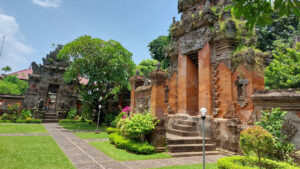
 Essential Tips and Tricks for Visiting the Bali Museum in Denpasar
Essential Tips and Tricks for Visiting the Bali Museum in Denpasar